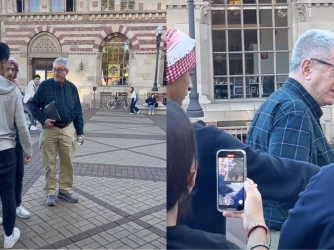Table of Contents
Freedom of assembly and why it’s important
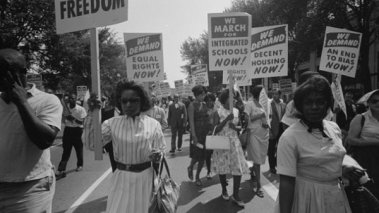
Photo by Warren K. Leffler / Courtesy of the Library of Congress, Prints & Photographs Division
Peaceful protesters attend the March on Washington on Aug. 28, 1963 carrying signs for equal rights, integrated schools, decent housing, and an end to bias.
The First Amendment prohibits the government from abridging “the right of the people peaceably to assemble.” This basic freedom ensures that individuals can gather together to advocate for causes, beliefs, movements, or protests.
In American history, groups as diverse as union workers, civil rights advocates, anti-war demonstrators, and Ku Klux Klan members have assembled, taken to the streets, and broadcast their messages to the public. Sometimes these efforts have galvanized public support or changed public perceptions. Imagine the Civil Rights Movement without the Children’s Crusade or the March on Washington. Consider the Women’s Suffrage Movement without placard-carrying suffragists — called “Rampant Women” by The New York Times — taking to the streets without fear.
The U.S. Supreme Court recognized the importance of this freedom in the 1937 case De Jonge v. State of Oregon, writing that “the right to peaceable assembly is a right cognate to those of free speech and free press and is equally fundamental.”
Freedom of assembly is the fourth inalienable right enumerated in the First Amendment, which means public universities are obligated to ensure that it is protected.
The Court invalidated an Oregon “criminal syndicalism” law that prohibited advocacy of “any unlawful acts or methods as a means of accomplishing or effecting industrial or political change or revolution.” Dirk De Jonge had been convicted under the statute for teaching Communist doctrine to a gathering of 300 people. The Supreme Court reversed the conviction, ruling that “the holding of meetings for peaceable political action cannot be proscribed.”
A key to understanding freedom of assembly is recognizing the importance of the adverb “peaceably,” as the First Amendment protects peaceful, not violent, assembly. Government officials may not arrest those who assemble peaceably because they fear the protestors’ message or otherwise want to shut down public discourse.
Freedom of assembly in the Civil Rights Movement
Consider the celebrated civil rights decision of the 1963 case of Edwards v. South Carolina. The case began in March 1961, when nearly 200 African-Americans — mainly college and high school students — marched from a church to the statehouse in Columbia, South Carolina. On their journey, they chanted religious hymns and carried signs bearing the message “Down with Segregation.”
One of the participating students was longtime congressman Jim Clyburn. “We knew we were going to be arrested and we felt and said all I have to do is get my case to the United States Supreme Court because of the decision issued in 1954, Brown v. Board of Education,” he said in an interview. “We just knew we would be vindicated.”
Though the march was peaceful, the police, on the instruction of the city manager, arrested 187 of the marchers for disorderly conduct or breach of the peace — a common tactic used in that era to mute the messages of civil rights protestors.
“I will always wear those arrests as a badge of honor,” Clyburn said. “We knew what we were doing was right and we had the courage of our convictions.”
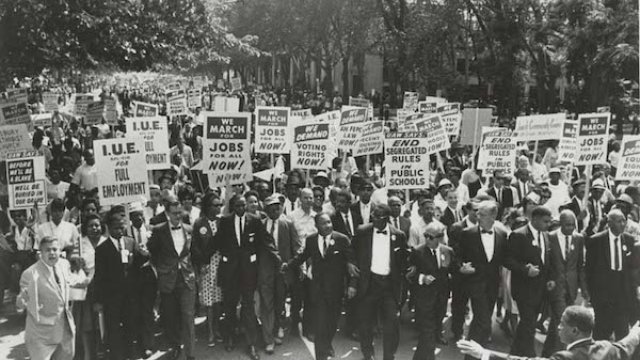
From protests to the Supreme Court: How the Civil Rights Movement advanced First Amendment legal protections
News
Peaceful protests not only appealed to the moral conscience of the average citizen but were also vehicles for advancing civil rights
The Supreme Court reversed its convictions, writing that the “circumstances in this case reflect an exercise of these basic constitutional rights in their most pristine and classic form.” The high court said that the government could not criminalize “the peaceful expression of unpopular views.”
The Edwards decision set a powerful precedent for other civil rights leaders who faced arrest or governmental retaliation for leading peaceful marches, including Ben Elton Cox, Fred Shuttlesworth, and Dick Gregory.
Freedom of assembly has also protected those who espouse messages of hate or racial supremacy. Both state and federal courts upheld the rights of a neo-Nazi group to march through Skokie, Illinois, a suburb near Chicago that was home to many Holocaust survivors. Similarly, in the 1992 case of Forsyth County v. Nationalist Movement, the Supreme Court struck down an ordinance that allowed officials to charge higher permit fees to groups whose marches would require more police protection. The Court bluntly declared, “The First Amendment prohibits the vesting of such unbridled discretion in a government official.”
A key problem with regulating hate speech is that it remains difficult, if not impossible, to define exactly what constitutes hate speech. A free society must give much breathing space to hateful speech in order to avoid thought control and the censorship of unpopular views by the government. Instead of stifling free speech, we, as free citizens, have the power to most effectively answer hateful speech through protest, mockery, debate, questioning, silence, or by simply walking away.
Freedom of assembly on college and university campuses
College students have long exercised their freedom to assemble on campus, advocating for civil rights and other causes, as FIRE Senior Fellow Robert Shibley explains in his piece, “How the civil rights movement brought us free speech on campus.” The Berkeley Free Speech Movement, which began in 1964, is a pristine example of students exercising their free speech and free assembly rights to urge their administration to change its policies.
Public colleges and universities must allow students to assemble and speak freely on campus. Some colleges and universities have sought to limit freedom of assembly by creating so-called “free-speech zones.” While the term sounds friendly to speech, the reality is different. FIRE explains that “these zones function more like free speech quarantines, banishing student and faculty speakers to outposts that may be tiny, on the fringes of campus, or (frequently) both.”
These efforts to zone and regulate speech are often unconstitutional. As FIRE explains in its “Guide to Free Speech on Campus,” “On the modern public campus, many of the open spaces between buildings and many public squares scattered throughout the campus should be considered public forums.” Fortunately, in a recent FIRE survey, only 5.2% of colleges and universities now have such policies on the books — a significant decline from years past.
Freedom of assembly is the fourth inalienable right enumerated in the First Amendment, which means public universities are obligated to ensure that it is protected.
Freedom of assembly is vitally important on public college and university campuses. After all, the university is supposed to be the very place where students encounter challenging new ideas and experience individual growth. For such growth to take place, universities must honor their obligations to the First Amendment — including a healthy respect for freedom of assembly.
Recent Articles
FIRE’s award-winning Newsdesk covers the free speech news you need to stay informed.
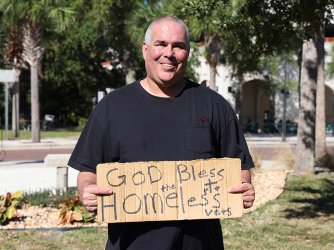

FIRE Statement: X Corp's lawsuit and Texas's investigation into Media Matters for America are deeply misguided
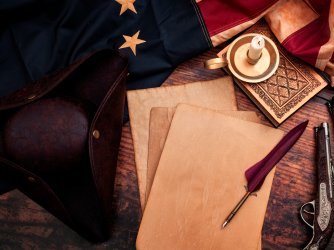
Anonymous speech is as American as apple pie
